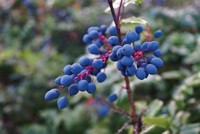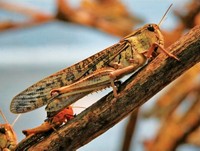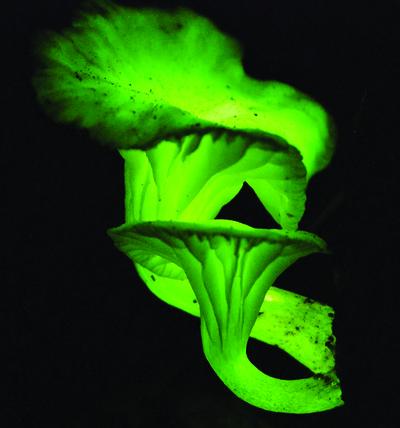Advertisement
Grab your lab coat. Let's get started
Welcome!
Welcome!
Create an account below to get 6 C&EN articles per month, receive newsletters and more - all free.
It seems this is your first time logging in online. Please enter the following information to continue.
As an ACS member you automatically get access to this site. All we need is few more details to create your reading experience.
Not you? Sign in with a different account.
Not you? Sign in with a different account.
ERROR 1
ERROR 1
ERROR 2
ERROR 2
ERROR 2
ERROR 2
ERROR 2
Password and Confirm password must match.
If you have an ACS member number, please enter it here so we can link this account to your membership. (optional)
ERROR 2
ACS values your privacy. By submitting your information, you are gaining access to C&EN and subscribing to our weekly newsletter. We use the information you provide to make your reading experience better, and we will never sell your data to third party members.
Biological Chemistry
Smoke Signals
Seeds sprout in the ashes of forest fires, thanks to small molecules in smoke
by Bethany Halford
April 12, 2010
| A version of this story appeared in
Volume 88, Issue 15

The gray haze that lingers after a forest fire isn’t just a hallmark of devastation. Within that smoke’s wispy tendrils also drifts a family of signaling molecules ready to summon the forest back to life.
Smoke, it seems, has the power to make seeds sprout. For decades, scientists have been hunting for the molecules responsible for this growth-triggering power as well as those compounds’ mechanism of action. By delving into the science of smoke signals, these researchers are hoping to harness the compounds to revitalize barren soil and boost agriculture.
Smoke’s ability to spur seed germination after a forest fire first caught the attention of ecologists 20 years ago. Sifting through the thousands of chemicals in smoke, the scientists sought the molecular source of this botanical awakening. In 2004, a team led by the University of Western Australia’s Gavin R. Flematti reported the first smoke-derived compound responsible for promoting seed germination (Science 2004, 305, 977).
That molecule, 3-methyl-2H-furo[2,3-c]pyran-2-one, or KAR1, turned out to be just one in a family of butenolides that triggers seed germination and controls seedling growth at parts-per-billion concentrations (J. Agric. Food Chem. 2009, 57, 9475). The researchers named the compounds “the karrikins,” for “ karrik,” an aboriginal word for smoke.
The molecular mechanism behind how the karrikins form is something of a mystery. Flematti tells C&EN that the compounds are generated from burning cellulose, a major component of plants.
Johannes van Staden, a botany professor and director of the Research Centre for Plant Growth & Development at South Africa’s University of KwaZulu-Natal, Pietermaritzburg, thinks that the compounds are formed as part of the Maillard reaction—the reaction of amino acids and sugars that gives browned food its delectable flavor.
Along with coworker Marnie E. Light, van Staden led a team that identified KAR1 in the reaction products from heating certain amino acids with sugars (J. Agric. Food Chem. 2005, 53, 5936). They also found the compound in toast and instant-coffee extract, which are well-known examples of food that’s undergone Maillard chemistry. “I believe it comes from very basic molecules. Anytime you heat plant material that contains sugars and amino acids, you get this molecule,” van Staden says.
On the other hand, Flematti and coworkers have reported that KAR1 is produced from cellulose in the absence of amino acids. “How the molecule forms, I believe, will be—whenever it is solved—a brilliant piece of chemistry,” van Staden contends.
The origin of the karrikins isn’t the only puzzle associated with these plant promoters. Scientists are also trying to figure out just how the karrikins prompt seeds to sprout. A group led by Steven M. Smith, a professor of plant genomics at the University of Western Australia, recently published work suggesting that the molecules enhance seeds’ and seedlings’ response to light (Proc. Natl. Acad. Sci. USA, DOI: 10.1073/pnas.0911635107).
The research group discovered that the butenolides stimulate the expression of a small set of genes. “That set of genes was quite characteristic of genes that are commonly regulated by light,” Smith explains. “That gave us a clue that the karrikins are somehow activating the light response system.”
The researchers then tested how the seeds of Arabidopsis thaliana—a small flowering plant commonly used as a model system in plant biology—respond to light. Seeds treated with karrikins KAR1 and KAR2 become much more sensitive to light, the team discovered, as do their seedlings, which tend to grow in a more vigorous and robust fashion.
This light responsiveness makes sense, Smith explains, because the quality of light changes after a fire. “Before the fire, you have a canopy of leaves that tends to filter out some of the shorter wavelengths of light,” he says. “Once the fire has gone through, the canopy is lost and the spectrum of the light changes.” It shifts from far red to the ultraviolet region.
“Plants have an exquisite sensing system that allows them to detect different light qualities,” Smith continues. “Essentially, the karrikins activate that sensing system so the seeds and seedlings become much more sensitive to the light.” The molecules provide seeds with information about the environment above the soil, he says.
“It’s a fantastic trick that nature has come up with,” Smith adds. “The karrikins are signaling that there’s been this change in the environment, and they’re basically saying to the seeds, ‘Now would be a good time to germinate’ because there’s plenty of light, and there are presumably plenty of nutrients. So the environment is good for a small seedling to germinate.”
The karrikins aren’t the only signaling molecules in smoke. Van Staden’s group recently published the structure of a different butenolide found in postfire haze (J. Nat. Prod., DOI: 10.1021/np900630w). “This very small molecule actually acts as an inhibitor of the stimulant” for germination, van Staden says. “In our opinion, this is really a crucial little molecule that determines whether germination of a seed is switched on or off.”
So what would be the purpose of such an inhibitor molecule? Van Staden speculates that the molecules that stimulate and inhibit germination work synergistically, triggering germination when the environmental conditions are best for growing.
Forest fires are actually beneficial for ecosystems, provided they don’t happen too often. “They are invigorating for the natural vegetation,” van Staden says. “After a fire, plants germinate and grow incredibly fast.” Researchers have observed this phenomenon in the western cape of South Africa and elsewhere, but the seeds will germinate properly only if there is sufficient rainfall.
“Why is it that you need a certain amount of rain before you get these massive blooms in these semidesert areas?” van Staden asks. “There is something else that serves as, shall we say, a guard at the door to protect these seeds.”
A karrikin, once it’s been taken up by a seed, can’t be washed out, van Staden explains. “It is stuck somewhere in that seed, and it starts stimulating physiological processes,” he says. The inhibitor butenolide, on the other hand, is very water soluble. “So, when a certain amount of rain gets into the soil, the inhibitor will wash away,” he adds. This leaves behind the promoter to stimulate growth. If there’s not enough rain, then the inhibitor will override the karrikin.
Plants that respond to the karrikins aren’t limited to those native to fire-prone areas, which has prompted some to speculate that there’s a source of karrikins other than smoke. Although no other source has been discovered to date, researchers have suggested that microbes in the soil might produce the compounds. “Why would all these different species respond if there wasn’t some reason to?” Smith asks.
Even crops such as corn, tomatoes, lettuce, and onions have been shown to flourish when exposed to the compounds. “We have found that the molecules have tremendous invigorating properties,” van Staden says. “Seeds that have been stored for a long time and treated with these molecules become totally invigorated. They grow as if they never aged.” He adds that the karrikins also boost vegetable yields and help seedlings tolerate a wider range of temperatures.
“I believe that these molecules are a new group of growth stimulants over and above those we already know about,” van Staden says. He and Smith both say it’s possible that the compounds could one day be used in horticulture and farming.
The inhibitor compound could be used in conjunction with the karrikins, van Staden says, to ensure that the seeds emerge when conditions are ideal. “These molecules will, in my opinion, revolutionize agriculture for the simple reason that they provide plants with greater tolerance to a stressed environment,” he adds.
In Australia, Smith says, researchers are already using the karrikins to restore vegetation at bauxite mines, where the land has been stripped for aluminum ore. The compounds are used to pretreat the seeds being planted in the hostile soil.
Unfortunately, at the moment the compounds are limited to specialist applications because they are expensive to make, Smith notes. Their synthesis proceeds with low yields, van Staden explains, and the starting materials are costly. “There are very clever chemists in the world,” he says, “and I’m sure once they start thinking about it, someone’s going to come along with a solution to that problem.”







Join the conversation
Contact the reporter
Submit a Letter to the Editor for publication
Engage with us on Twitter